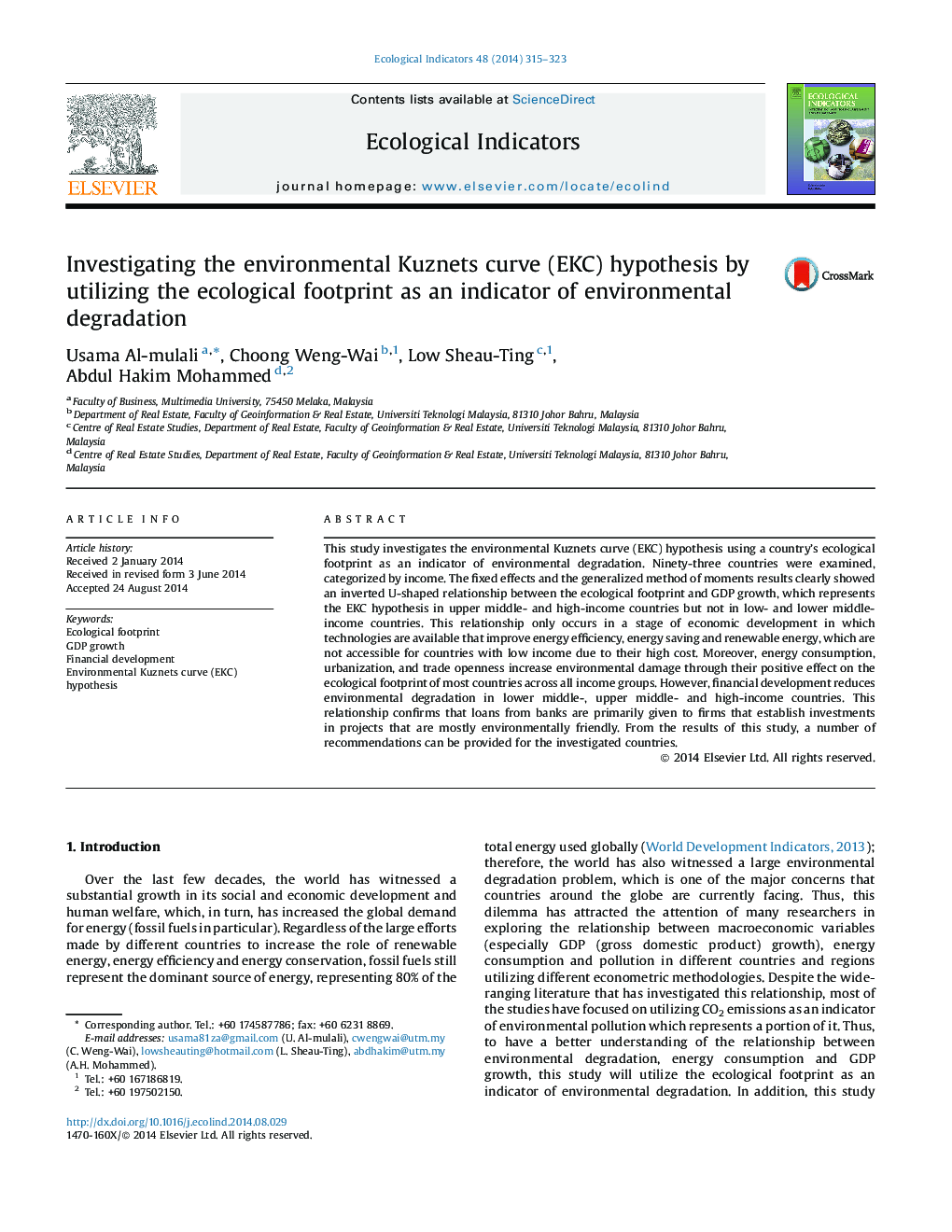| Article ID | Journal | Published Year | Pages | File Type |
|---|---|---|---|---|
| 6295019 | Ecological Indicators | 2015 | 9 Pages |
Abstract
This study investigates the environmental Kuznets curve (EKC) hypothesis using a country's ecological footprint as an indicator of environmental degradation. Ninety-three countries were examined, categorized by income. The fixed effects and the generalized method of moments results clearly showed an inverted U-shaped relationship between the ecological footprint and GDP growth, which represents the EKC hypothesis in upper middle- and high-income countries but not in low- and lower middle-income countries. This relationship only occurs in a stage of economic development in which technologies are available that improve energy efficiency, energy saving and renewable energy, which are not accessible for countries with low income due to their high cost. Moreover, energy consumption, urbanization, and trade openness increase environmental damage through their positive effect on the ecological footprint of most countries across all income groups. However, financial development reduces environmental degradation in lower middle-, upper middle- and high-income countries. This relationship confirms that loans from banks are primarily given to firms that establish investments in projects that are mostly environmentally friendly. From the results of this study, a number of recommendations can be provided for the investigated countries.
Related Topics
Life Sciences
Agricultural and Biological Sciences
Ecology, Evolution, Behavior and Systematics
Authors
Usama Al-mulali, Choong Weng-Wai, Low Sheau-Ting, Abdul Hakim Mohammed,
